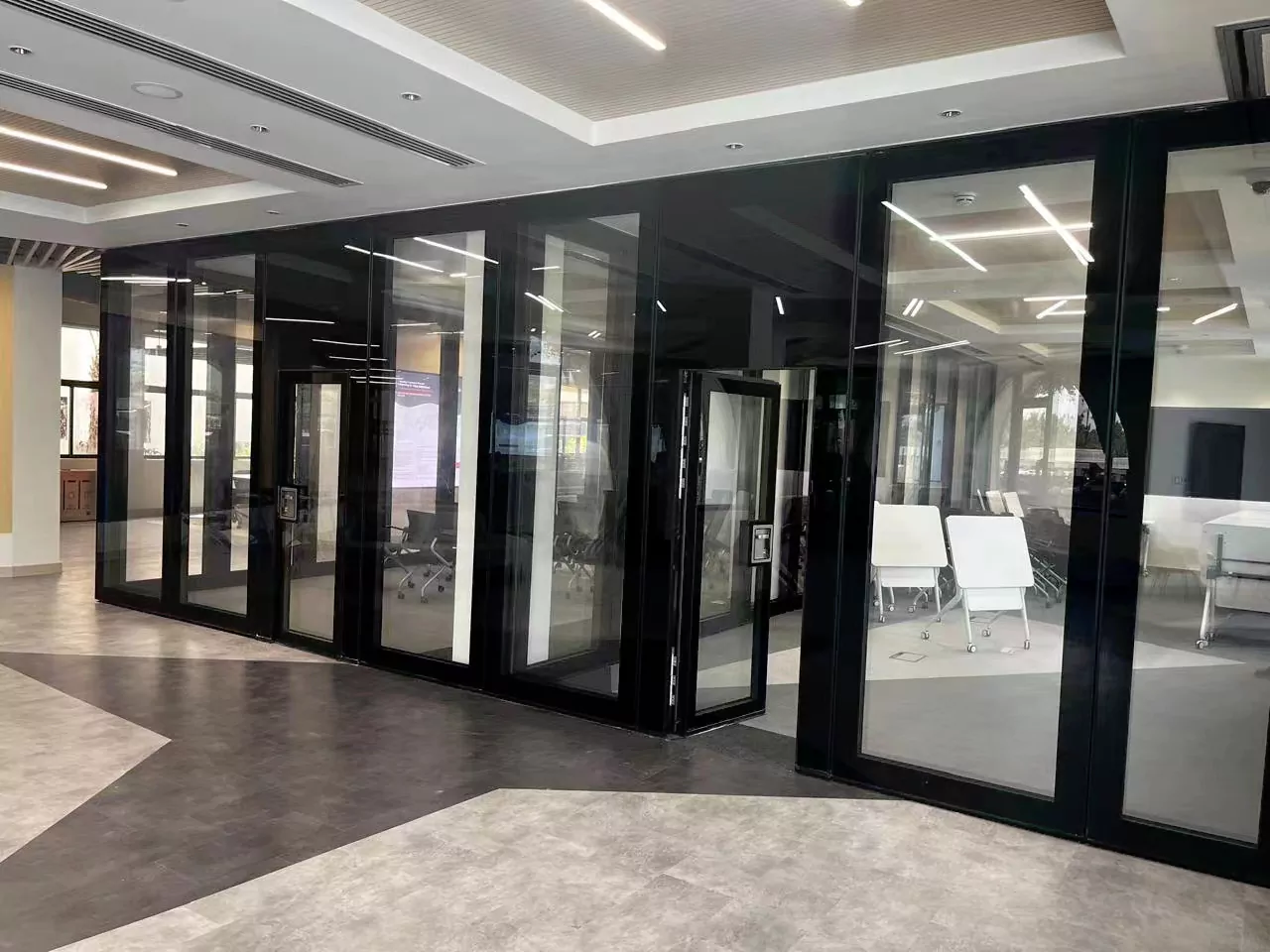In the modern world of architecture and interior design, the concept of creating spaces that are simultaneously open and private has become increasingly important. The desire for transparency and connectivity, coupled with the need for privacy and noise control, presents a unique challenge for designers. Enter glass partitions – a design element that beautifully balances these seemingly conflicting requirements. In this article, we explore how glass partitions can be used to create spaces that are both open and private, enhancing the functionality, aesthetics, and overall experience of various environments.

The Dual Nature of Glass Partitions
Glass partitions are unique in their ability to offer both visibility and separation. Unlike solid walls, which create a complete visual and physical barrier, glass partitions allow light to pass through, creating a sense of openness and spaciousness. At the same time, they provide a clear boundary between different areas, ensuring privacy and minimizing noise transmission. This dual nature makes glass partitions an ideal choice for a wide range of applications, from offices and schools to healthcare facilities and retail spaces.
Enhancing Openness
Natural Light
Glass partitions maximize the amount of natural light that enters a space, creating a brighter, more inviting atmosphere. This not only enhances the aesthetic appeal of the environment but also has numerous benefits for occupants, including improved mood, productivity, and overall well-being. The transparency of glass partitions also promotes a sense of connection and collaboration, making them an excellent choice for communal spaces.
Visual Continuity
By using glass partitions, designers can create a visual continuum that connects different areas of a space. This is particularly useful in large, open-plan environments where maintaining a sense of cohesion and flow is important. Glass partitions allow occupants to see and interact with each other, fostering a more inclusive and collaborative culture.
Ensuring Privacy
Controlling Visibility
While transparency is a key advantage of glass partitions, privacy can be maintained through various design strategies. For example, using frosted, etched, or tinted glass can obscure the view while still allowing light to pass through. Privacy films and decorative patterns can also be applied to glass surfaces to create a more opaque appearance without compromising the sleek, modern look of the partitions.
Soundproofing
In addition to visual privacy, glass partitions can be designed to reduce noise transmission. Acoustic glass, which is specially engineered to absorb and dampen sound waves, can be used to create quieter, more private spaces. This is particularly important in environments where noise levels can be disruptive, such as offices, schools, and healthcare facilities.
Versatility in Design
Glass partitions offer a high degree of versatility in terms of design and functionality. They can be customized to fit the specific needs and aesthetic of any space, with options ranging from frameless, minimalist designs to more decorative, etched, or colored glass. Additionally, glass partitions can be incorporated into various types of systems, such as sliding doors, hinged doors, and folding walls, providing flexibility in terms of space configuration and usage.
Applications of Glass Partitions
Offices and Workspaces
In open-plan offices, glass partitions can be used to create private meeting rooms, quiet workspaces, and noise barriers between different departments. They help to maintain focus and productivity while preserving the open, collaborative nature of the workspace.
Educational Institutions
Schools and universities can benefit from glass partitions in classrooms, libraries, and study areas. They provide a visual connection between different learning spaces while ensuring privacy and minimizing distractions.
Healthcare Facilities
In healthcare settings, glass partitions are often used to create private patient rooms, consultation areas, and waiting rooms. They help to maintain patient privacy and reduce noise levels, contributing to a more comfortable and stress-free environment.
Retail and Commercial Spaces
Glass partitions can be used in retail stores, restaurants, and other commercial spaces to create separate areas for different functions, such as private dining rooms, VIP lounges, or display areas. They enhance the customer experience by providing a more controlled and visually appealing environment.
Conclusion
Glass partitions offer a unique and versatile solution for creating spaces that are both open and private. By balancing transparency and separation, they enhance the functionality, aesthetics, and overall experience of various environments. Whether you’re designing an office, school, healthcare facility, or commercial space, glass partitions can help you achieve the perfect balance between openness and privacy, fostering a more inclusive, productive, and comfortable environment for all occupants.
